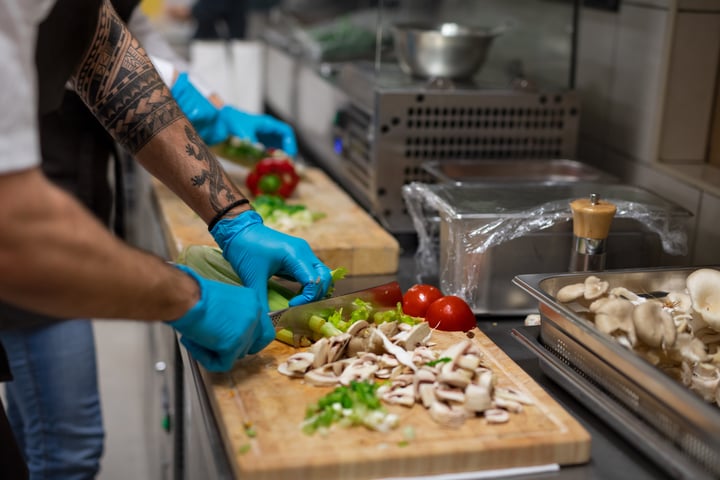
- Home
- Crunchtime Blog
- Two Keys to Lowering Restaurant Food Waste

Lowering your restaurant's food waste has many benefits, including lowering your overall food costs. That said, reducing food waste can be tricky to master. Like the desire to get in shape by minimizing food intake and maximizing exercise, it is often easier said than done. Here are two simple, effective tips to help your restaurant reduce food waste in order to keep food costs within - or under - budget.
Plan how much to prep every day
It’s time to stop guessing how much food to prepare, and get it exactly right every time. Clearly, over-prepping can result in overstocked inventory and then waste, which, of course, equals higher food costs. Under-prepping can result in stress and poor service as supplies run out, and may result in an unexpected shopping trip. Unexpected shopping trips often result in paying higher prices and buying too much food, further increasing wastage! Better planning will help you avoid this costly cycle.
Managers may rely on intuition when deciding how much to prepare, but the data on the bottom line indicates that detailed production planning every day using a forecast based on historical data, will yield better results. Using the proper tools, the planning process may be done quickly and result in a substantial payoff.
Track your food waste every day
Clearly, it is important to understand what goes on your guest’s plates. Just as important is tracking what ends up in the back dumpster. If food costs are high, determine if the cause is one of the following:
- Food prices from your vendors
- Data error, such as inaccurate documentation of receiving or invoicing inventory
- Operational fault, such as incorrect recipe preparation, portioning, spoilage, and theft
Tracking waste accurately helps the manager analyze when waste is a problem. It allows the manager to respond quickly to any identified operational issues. Additionally, tracking waste saves time and money – often 2%-5% or more depending on current operations.
Pro Tip:
It can be tricky to account for individual ingredients in wasted recipes. As an example, if a team member drops a container with sixteen servings of beef stew, in addition to a big mess to clean up, there are three options a manager can employ to account for the loss:
- Using the recipe for beef stew, determine how much of each ingredient is in 16 servings. Then record the amount of each ingredient as individually wasted.
- Ignore it, and neglect to document it.
- Utilize a restaurant software management solution that can exactly analyze the ingredients in 16 servings of stew. Enter “16 Servings of Beef Stew” into the system as waste. The BOH system will then automatically record the accurate amount of each individual ingredient from the inventory, marking each as wasted.
The third option is super easy and the best option for a busy restaurant. The second option is certainty the easiest still (and quite popular) but it won’t help with food cost management. Of course, the first option is very time consuming and not advised.
These two tips are simple to implement. Every day, it is important to prep a forecasted production plan in order to keep track of waste. In this way, a restaurant chain can take two major strides towards better food cost management.
Share this post
Related


Mobile Reporting Apps for Restaurant Data

